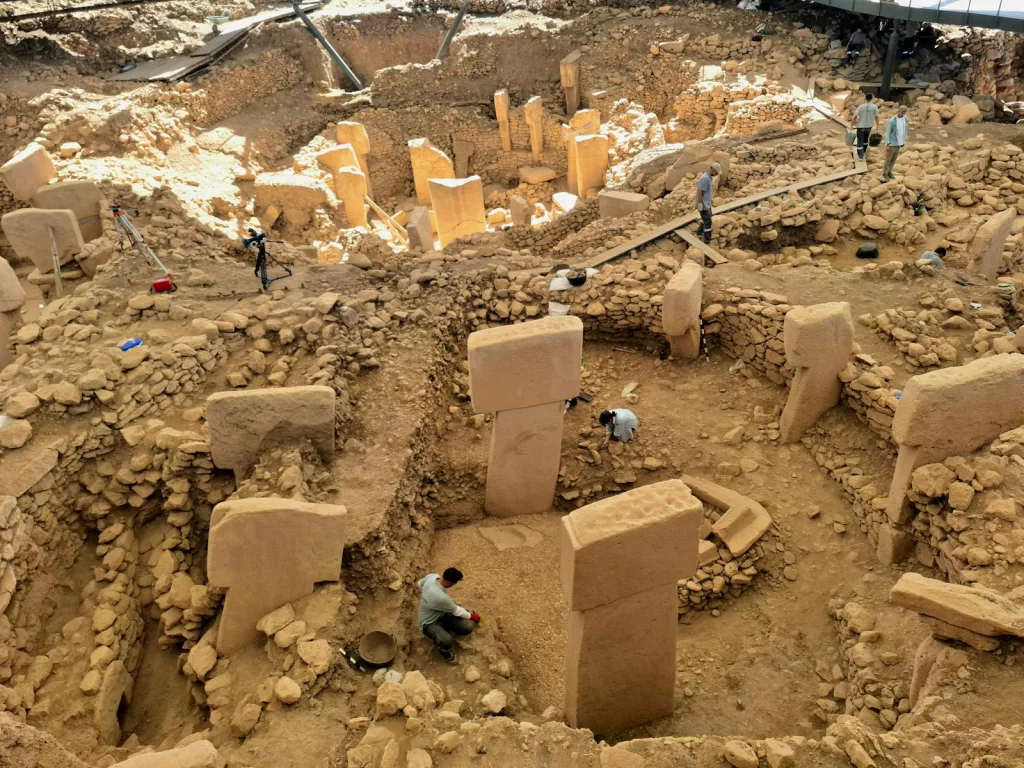The Untold Story of Gobekli Tepe: The World’s Oldest Temple

Gobekli Tepe, an ancient archaeological site in southeastern Turkey, has captivated historians, archaeologists, and anthropologists since its discovery in the mid-20th century. Often referred to as the world’s oldest temple, Gobekli Tepe challenges long-held assumptions about human history and the origins of civilization. Predating Stonehenge by over 6,000 years, this enigmatic site offers profound insights into the beliefs, technologies, and social structures of our ancient ancestors. Yet, much about Gobekli Tepe remains shrouded in mystery, fueling debates and inspiring awe in equal measure.
This article explores the untold story of Gobekli Tepe, exploring its construction, purpose, and significance in reshaping our understanding of prehistoric humanity. By examining the archaeological discoveries and theories surrounding this ancient marvel, we gain a deeper appreciation for the ingenuity and spiritual depth of the people who built it.
The Discovery of Gobekli Tepe
Gobekli Tepe, which translates to “Potbelly Hill” in Turkish, was first identified as an archaeological site in the 1960s. However, its true significance was not recognized until 1994, when German archaeologist Klaus Schmidt began excavating the area. What Schmidt uncovered would revolutionize the study of human prehistory: massive stone pillars arranged in circular formations, adorned with intricate carvings of animals and abstract symbols. Radiocarbon dating revealed that the site was constructed around 9600 BCE, during the Neolithic period, when humans were still transitioning from a nomadic hunter-gatherer lifestyle to settled agricultural societies.
The discovery of Gobekli Tepe stunned the archaeological community. Conventional wisdom held that complex structures and organized religious practices emerged only after the advent of agriculture. Yet Gobekli Tepe predates known agricultural settlements, suggesting that the drive to create monumental architecture and engage in spiritual rituals may have preceded the development of farming. This paradigm-shifting discovery has prompted scholars to reconsider the timeline of human innovation and the priorities of early societies. The notion that hunter-gatherers, rather than settled agriculturalists, could have coordinated such a sophisticated endeavor challenges deeply ingrained assumptions about the roots of civilization.
The Architecture of Gobekli Tepe
The architecture of Gobekli Tepe is as impressive as it is enigmatic. The site consists of multiple stone circles, each with towering T-shaped pillars weighing up to 20 tons. These pillars, some standing over 16 feet tall, were meticulously carved from limestone using primitive stone tools. The effort required to quarry, transport, and erect these massive stones suggests a highly organized and cooperative society capable of remarkable engineering feats despite limited technology.
Symbolism and Artistry
The pillars at Gobekli Tepe are adorned with elaborate carvings of animals, including lions, snakes, vultures, and wild boars, as well as abstract geometric designs. These carvings are believed to hold symbolic or spiritual significance, though their exact meaning remains a subject of debate. Some researchers speculate that the animal motifs represent totems or deities, while others suggest they may have been used to convey myths, cosmological beliefs, or communal identities. The carvings could symbolize the interconnectedness of humans with the natural world or act as representations of spiritual guardians.
The artistic skill displayed in these carvings is remarkable, indicating a level of sophistication that challenges assumptions about the capabilities of Neolithic hunter-gatherers. The presence of predators and other powerful creatures in the carvings could signify an attempt to harness spiritual strength or commemorate the natural world’s importance in their daily lives. Additionally, the geometric patterns and precision of the carvings hint at an understanding of abstract thought and symbolism that was previously not associated with societies of this era.
Hidden Layers
One of the most intriguing aspects of Gobekli Tepe is that it was deliberately buried by its creators around 8000 BCE, only a few thousand years after its construction. Subsequent layers of the site remain unexcavated, with ground-penetrating radar revealing additional stone circles yet to be unearthed. The reasons for the intentional burial are unknown, but some theories propose that it was an act of ritual closure, preservation, or a response to environmental or social changes. This act of deliberate burial may also have symbolic significance, serving as a transition or an end to a spiritual era. By burying the site, its creators may have aimed to protect its sacred significance for future generations or to mark a shift in their cultural practices.
The Purpose of Gobekli Tepe
The purpose of Gobekli Tepe remains one of its greatest mysteries. Unlike later temples or settlements, the site shows no evidence of domestic activity, such as housing or agriculture. This absence suggests that Gobekli Tepe was not a residential community but rather a sacred or ceremonial center, a place where people gathered to engage in communal rituals and spiritual practices.
A Place of Worship
Many archaeologists believe that Gobekli Tepe served as a temple or place of worship, where early humans gathered to perform rituals and ceremonies. The circular arrangement of the pillars and their central placement evoke a sense of reverence and communal participation. Some researchers speculate that the site may have been dedicated to ancestor worship, fertility rituals, or cosmological observances, though definitive evidence is lacking. The alignment of some structures with celestial events further supports the idea that Gobekli Tepe could have been used for astronomical observations or rituals tied to the cycles of nature, such as solstices or equinoxes.
Theories about Gobekli Tepe’s spiritual significance are bolstered by its apparent role as a gathering place for people from surrounding regions. The effort required to construct and maintain the site likely necessitated cooperation among diverse groups, fostering social cohesion and shared cultural practices. This centralization of effort may have reinforced a sense of collective identity and purpose among its builders, uniting them through shared beliefs and common goals.
A Catalyst for Civilization?
One of the most provocative hypotheses about Gobekli Tepe is that it may have played a role in the transition from a nomadic to a settled way of life. Some researchers argue that the need to gather and collaborate on such an ambitious project could have encouraged the development of agriculture, as communities sought to sustain themselves near the site. This theory suggests that spiritual or communal motivations may have driven early humans to cultivate crops and domesticate animals, challenging the traditional view that economic necessity was the primary driver of agricultural development. In this view, Gobekli Tepe represents not only a spiritual milestone but also a turning point in human history, where the seeds of civilization were sown. Its existence implies that human ingenuity and the desire for communal connection may have been just as significant as survival needs in shaping our evolutionary trajectory.
The Significance of Gobekli Tepe
Gobekli Tepe’s discovery has profound implications for our understanding of human prehistory. It challenges the traditional narrative that complex societies and religious practices emerged only after the advent of farming and permanent settlements. Instead, it suggests that the desire to build monumental structures and engage in collective rituals may have been a driving force in the development of civilization.
Rethinking Human Capabilities
The advanced engineering and artistic achievements of Gobekli Tepe’s builders challenge stereotypes about Neolithic hunter-gatherers as primitive or unsophisticated. The site demonstrates that early humans were capable of remarkable creativity, organization, and cooperation, even before the advent of written language or advanced tools. This realization reshapes our understanding of what prehistoric societies could accomplish and underscores the importance of collaborative effort and shared vision in achieving monumental goals. It also raises questions about how knowledge was transmitted and preserved across generations, hinting at sophisticated systems of education and cultural continuity.
Insights into Spirituality
Gobekli Tepe also offers a window into the spiritual lives of our ancient ancestors. The site’s intricate carvings and monumental architecture suggest a deep connection to the natural world and a desire to explore existential questions. The emphasis on communal ritual and the absence of domestic structures imply that the spiritual or symbolic purpose of the site was its central focus. By studying Gobekli Tepe, we gain insights into the origins of religious and symbolic thought, which continue to shape human culture and identity today. The spiritual practices at Gobekli Tepe may also offer clues about how early humans sought to make sense of their place in the cosmos and their relationship with the environment.
Additionally, the collaborative nature of the site suggests that spirituality and ritual may have been critical in fostering social bonds and mitigating conflicts among disparate groups. This highlights the role of shared beliefs in uniting early human communities and providing a sense of purpose and belonging.
Ongoing Research and Future Discoveries
Despite decades of excavation, much about Gobekli Tepe remains unknown. Researchers continue to study the site, employing advanced technologies such as 3D mapping, isotopic analysis, and microscopic residue testing to uncover new clues. These methods may reveal more about the people who built Gobekli Tepe, their way of life, and the broader context in which the site was constructed. For example, residue analysis on tools and pottery could provide insights into their diet, trade networks, and social organization.
Additionally, other sites in the region, such as Karahan Tepe and Nevali Cori, may hold complementary insights into the cultural and technological innovations of the era. Together, these discoveries promise to deepen our understanding of the early stages of human civilization. Collaborative efforts among international researchers continue to expand the scope of inquiry, offering hope that the mysteries of Gobekli Tepe will one day be unraveled. Each new finding adds another piece to the puzzle, gradually illuminating the lives and aspirations of our distant ancestors.
Conclusion
Gobekli Tepe is a remarkable testament to the ingenuity, artistry, and spiritual depth of our ancient ancestors. As the oldest known temple in the world, it rewrites the narrative of civilization’s origins, showing us that Neolithic societies were far more capable and sophisticated than previously imagined. Though much about the site remains a mystery, its enduring presence continues to ignite the imagination of researchers and the general public alike, inspiring new ways of thinking about our shared human story.
Exploring Gobekli Tepe allows us to uncover more than just an ancient structure; it offers a profound connection to the people who built it and their timeless quest to understand the world around them. This site teaches us about collaboration, resilience, and the power of shared beliefs in shaping human destiny. Its carvings and towering stones carry a legacy of unity and purpose, reminding us of the deep-seated human need to connect, create, and find meaning. As new discoveries come to light, Gobekli Tepe will undoubtedly continue to reshape our understanding of early societies, serving as both a symbol of human achievement and a bridge between the past and the future.
Through its beauty and mystery, Gobekli Tepe reminds us of the boundless creativity and determination of those who came before us. It stands not only as a marker of ancient ingenuity but also as a timeless reflection of our shared humanity. It invites us to look back in awe and forward with hope, as we continue to explore the questions and connections that unite us all.



